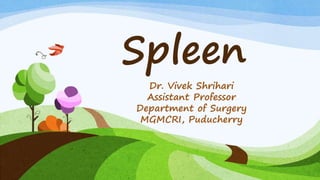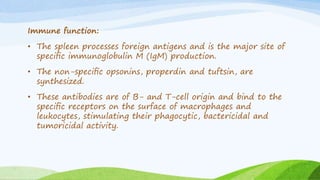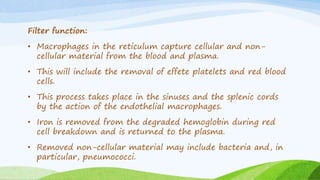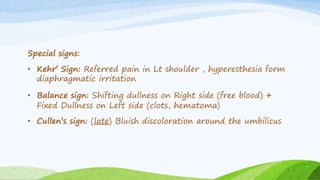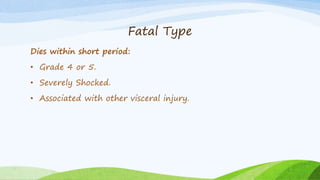The spleen lies in the left hypochondrium between the stomach and diaphragm. It filters blood and removes old red blood cells, produces antibodies, and stores a small blood volume. The spleen can be injured by direct or indirect trauma, with grades ranging from superficial bruising to complete rupture. Symptoms of rupture include abdominal pain and tenderness along with hypotension. Treatment involves resuscitation followed by splenectomy in adults or splenic preservation techniques in children. The spleen can also enlarge in conditions like infections, increasing the risk of injury.
